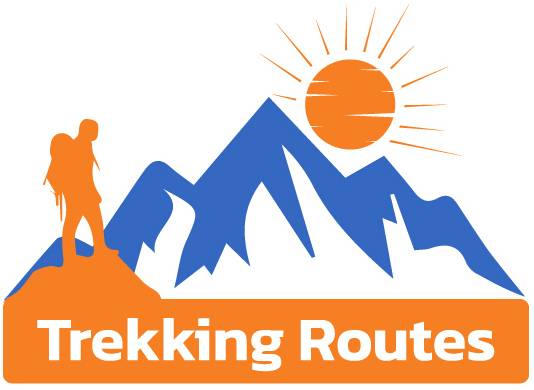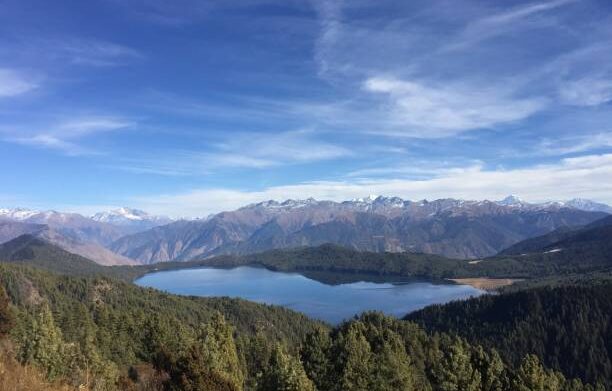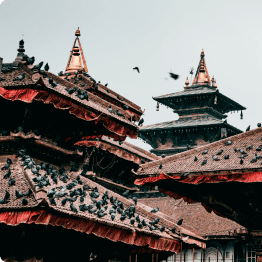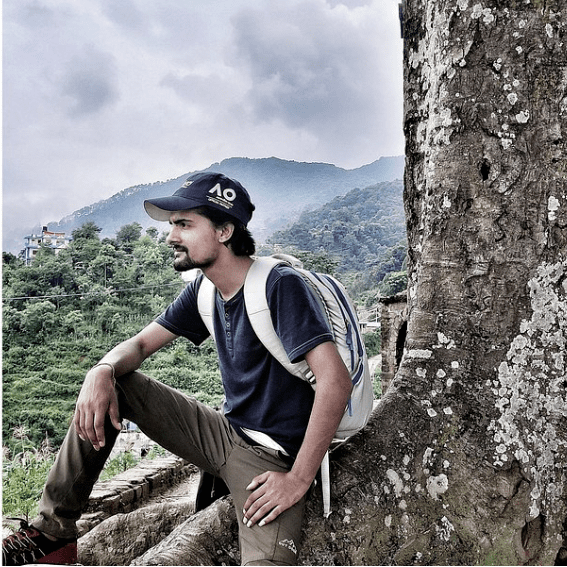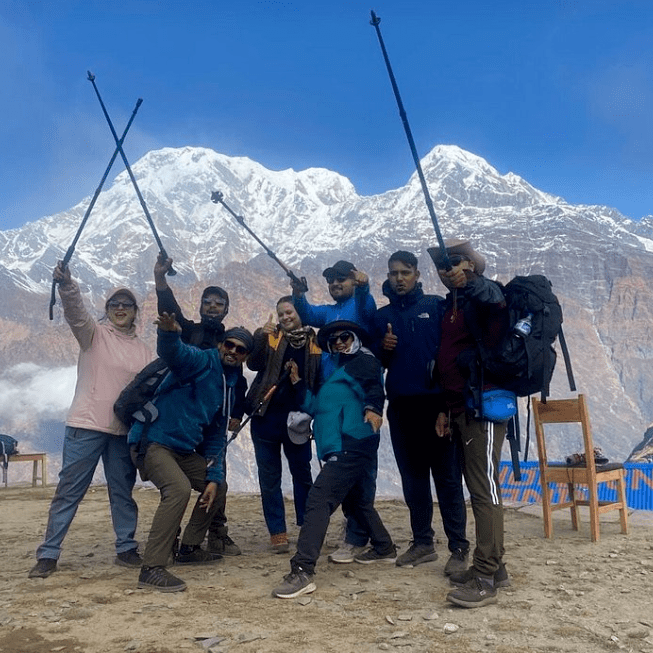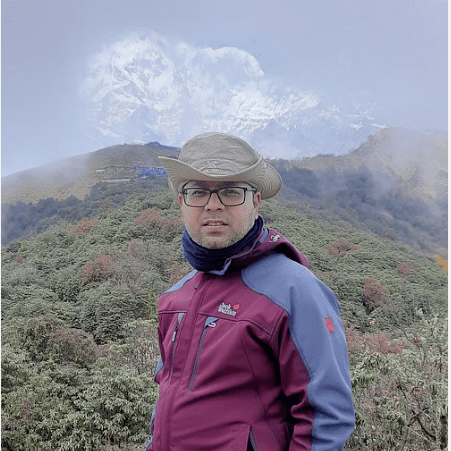Upper Dolpo Trek
Good To Know
-
Duration 20
-
Activity Trekking
-
Difficulty Type Moderate
-
Best Season Spring & Autumn
-
Max. Altitude 4530m
-
Accommodation Tea House
-
Meal 3 Meal A day
-
Trip Starts Kathmandu
The Upper Dolpo Trek is a challenging yet profoundly rewarding journey through one of the most remote and least explored regions of Nepal. Nestled in the far-western part of the country, Upper Dolpo is a land of rugged natural beauty, ancient monasteries, and a rich Tibetan Buddhist culture that remains largely untouched by modernity. This trek offers a rare opportunity to experience a hidden world where time seems to stand still.
Upper Dolpo, often referred to as the “Last Hidden Shangri-La,” is characterized by its stark landscapes, soaring mountains, and deep, serene valleys. The region lies within the Shey Phoksundo National Park, home to the stunning Phoksundo Lake, Nepal’s deepest and most beautiful lake. The trek takes you across high mountain passes, through traditional Tibetan-style villages, and past ancient monasteries, offering breathtaking views of the Himalayas and a deep spiritual experience.
The Upper Dolpo Trek is not just about the physical challenge; it’s a journey into the heart of one of Nepal’s most culturally rich and isolated areas. The Dolpo region was opened to trekkers only in 1989, and it still requires special permits due to its proximity to the Tibetan border. The people of Dolpo, known as Dolpo-pa, continue to live as they have for centuries, following a way of life that revolves around yak herding, farming, and trade.
This trek is ideal for experienced trekkers who are looking for a truly off-the-beaten-path adventure. It requires good physical fitness, determination, and a spirit of adventure, as the trails are long, the terrain is rugged, and the altitudes are high. However, the rewards are immense: unparalleled natural beauty, rich cultural experiences, and a sense of profound peace that can only be found in such a remote and untouched part of the world.
Highlights
- Phoksundo Lake: Visit the stunning Phoksundo Lake, known for its deep blue waters and surrounded by cliffs and snow-capped peaks.
- Shey Gompa: Explore Shey Gompa, an ancient monastery and the spiritual heart of Upper Dolpo, often referred to as the “Crystal Monastery.”
- High Mountain Passes: Cross challenging high passes such as Kang La (5,360m) and Saldang La (5,200m), offering panoramic views of the Himalayas.
- Remote Tibetan Villages: Experience the traditional way of life in remote Tibetan-style villages like Ringmo, Saldang, and Dho Tarap.
- Rich Tibetan Culture: Immerse yourself in the unique Tibetan Buddhist culture of the Dolpo-pa, with opportunities to visit ancient monasteries and witness traditional rituals.
- Shey Phoksundo National Park: Trek through Nepal’s largest national park, home to diverse flora and fauna, including the elusive snow leopard and blue sheep.
- Untouched Wilderness: Enjoy the solitude and tranquility of trekking in one of the most remote and least visited regions of Nepal.
- Spiritual Journey: The trek is often described as a pilgrimage, offering deep spiritual experiences in some of the most sacred places in Nepal.
- Stunning Landscapes: Trek through a variety of landscapes, from arid high-altitude deserts to lush green valleys, all framed by towering mountains.
- Cultural Immersion: Engage with the Dolpo-pa people, learning about their customs, traditions, and way of life that have remained largely unchanged for centuries.
Itinerary
-
Accommodation 3 Star Hotel
-
Max Altitude 1400
-
Meal Breakfast
Your journey begins with your arrival at Tribhuvan International Airport in Kathmandu. Upon arrival, our representative will greet you and transfer you to your hotel. After check-in, you can relax or explore the nearby streets of Thamel, known for its shops, cafes, and vibrant atmosphere. In the evening, you’ll have a welcome dinner at a traditional Nepali restaurant, where you’ll meet your guide and receive a briefing on the trek. You’ll spend the night in a comfortable hotel in Kathmandu.
-
Accommodation
-
Max Altitude
-
Meal
After breakfast, you’ll take a flight from Kathmandu to Nepalgunj, a bustling town in the southwestern part of Nepal, near the Indian border. The flight takes about an hour, and upon arrival, you’ll be transferred to your hotel. Nepalgunj is a gateway to the remote regions of western Nepal and has a distinct Terai culture. You’ll have the afternoon free to explore the town or relax at your hotel. You’ll spend the night in Nepalgunj.
-
Accommodation
-
Max Altitude
-
Meal
Early in the morning, you’ll take a scenic flight from Nepalgunj to Juphal, a small airstrip in the Dolpo region. The flight offers stunning views of the Himalayas and takes about 45 minutes. Upon landing in Juphal, you’ll begin your trek with a descent to the Thuli Bheri River, followed by a walk along the riverbank to the town of Dunai, the district headquarters of Dolpo. The trek today is relatively easy, taking about 2-3 hours. You’ll stay overnight in a teahouse in Dunai.
-
Accommodation
-
Max Altitude
-
Meal
After breakfast, you’ll begin your trek to Chhepka, a journey of about 6-7 hours. The trail follows the Suli Gad River and passes through lush forests of pine, fir, and juniper. As you walk, you’ll encounter small villages and farmland, offering a glimpse into the rural life of the Dolpo region. The trek is moderately challenging, with some ascents and descents along the way. Chhepka is a small village located near the entrance of Shey Phoksundo National Park. You’ll stay overnight in a teahouse in Chhepka.
-
Accommodation
-
Max Altitude
-
Meal
Today’s trek takes you deeper into Shey Phoksundo National Park, as you make your way from Chhepka to Jharana Hotel, a journey of about 6-7 hours. The trail gradually ascends, offering beautiful views of the surrounding mountains and forests. Along the way, you’ll pass several waterfalls, including the spectacular Phoksundo Waterfall, one of the highest in Nepal. Jharana Hotel is a simple lodge located near the trail, providing basic accommodations for trekkers. You’ll stay overnight in Jharana Hotel.
-
Accommodation
-
Max Altitude
-
Meal
After breakfast, you’ll continue your trek to the village of Ringmo and Phoksundo Lake, one of the most beautiful and sacred lakes in Nepal. The trek takes about 6-7 hours and involves a steep climb to a ridge that offers the first breathtaking view of Phoksundo Lake. From the ridge, the trail descends to the village of Ringmo, a traditional Tibetan village located on the shores of the lake.
Phoksundo Lake is known for its deep blue waters, which reflect the surrounding cliffs and snow-capped peaks. The lake is considered sacred by the local people, and swimming or bathing in the lake is strictly prohibited. You’ll have time to explore the village of Ringmo and the nearby Tshowa Gompa, a 900-year-old Bon monastery that sits on a ridge above the lake. You’ll stay overnight in a teahouse in Ringmo.
-
Accommodation
-
Max Altitude
-
Meal
Today is a rest day for acclimatization, allowing you to adjust to the altitude and explore the area around Phoksundo Lake. You can take a leisurely walk around the lake, visit the Tshowa Gompa, or simply relax and enjoy the stunning scenery. This is also an opportunity to interact with the local people and learn about their unique culture and traditions. The peaceful environment of Phoksundo Lake provides the perfect setting for meditation and reflection. You’ll stay overnight in a teahouse in Ringmo.
-
Accommodation
-
Max Altitude
-
Meal
After a day of rest, you’ll continue your trek, leaving the serene shores of Phoksundo Lake behind. Today’s trek takes you to Phoksundo Khola, a journey of about 5-6 hours. The trail follows the western edge of the lake, passing through rocky terrain and dense forests. As you trek, you’ll enjoy stunning views of the lake and the surrounding mountains.
Phoksundo Khola is a remote area with few settlements, and the trail becomes more rugged and challenging as you move deeper into the Dolpo region. You’ll camp near the Phoksundo River, surrounded by the natural beauty of the area. This remote campsite offers a true wilderness experience, far from the comforts of civilization. You’ll spend the night in tents.
-
Accommodation
-
Max Altitude
-
Meal
Today’s trek is one of the most challenging sections of the journey, as you make your way from Phoksundo Khola to Phoksundo Bhanjyang, a journey of about 6-7 hours. The trail involves a steep ascent through a narrow gorge, with some sections requiring careful navigation. As you climb higher, the landscape becomes more barren and rugged, with towering cliffs and snow-capped peaks dominating the horizon.
Phoksundo Bhanjyang is a high-altitude campsite located at the base of the Kang La Pass. The campsite offers stunning views of the surrounding mountains and valleys, and the night sky here is filled with stars. You’ll spend the night in tents, preparing for the challenging pass crossing the next day.
-
Accommodation
-
Max Altitude
-
Meal
Today is one of the most challenging and rewarding days of the trek, as you cross the Kang La Pass (5,360m) and descend to Shey Gompa, the spiritual heart of Upper Dolpo. The trek begins with a steep ascent to the pass, which takes about 2-3 hours. The climb is tough, but the panoramic views from the top of the pass are absolutely breathtaking.
From the pass, you’ll descend into the Shey Valley, a remote and sacred area that is home to the famous Shey Gompa, also known as the Crystal Monastery. The monastery, which dates back to the 11th century, is a major pilgrimage site for Tibetan Buddhists and is surrounded by a landscape of stunning natural beauty.
You’ll have time to explore the monastery and the surrounding area, learning about the spiritual significance of Shey Gompa and the ancient traditions of the Dolpo-pa people. You’ll stay overnight in a teahouse or camp near the monastery.
-
Accommodation
-
Max Altitude
-
Meal
Today is a rest day at Shey Gompa, allowing you to explore the area and acclimatize to the high altitude. You can take a walk around the Shey Valley, visit the nearby hermit caves, or simply relax and enjoy the peaceful atmosphere of the monastery. This is also an opportunity to meditate and reflect in one of the most spiritual places in Nepal.
Shey Gompa is surrounded by dramatic landscapes, including the Crystal Mountain, a sacred peak that is considered the spiritual center of Dolpo. The monastery itself is a beautiful and serene place, offering a deep sense of peace and connection to the natural world. You’ll stay overnight in a teahouse or camp near the monastery.
-
Accommodation
-
Max Altitude
-
Meal
After a day of rest and exploration, you’ll continue your trek, leaving Shey Gompa behind and heading towards Namgung, a journey of about 5-6 hours. The trail takes you through a series of high-altitude passes and remote valleys, offering stunning views of the surrounding mountains.
Namgung is a small village located on a hillside, with traditional stone houses and terraced fields. The village is home to Namgung Monastery, a small but important religious site for the local people. You’ll have time to explore the village and the monastery, learning about the unique culture and traditions of the Dolpo-pa. You’ll stay overnight in a teahouse in Namgung.
-
Accommodation
-
Max Altitude
-
Meal
Today’s trek takes you from Namgung to Saldang, one of the largest and most important villages in Upper Dolpo. The trek takes about 5-6 hours and involves a gradual ascent through rugged terrain. As you approach Saldang, the landscape opens up, offering wide views of the surrounding valleys and mountains.
Saldang is a vibrant and culturally rich village, with traditional Tibetan-style houses, monasteries, and chortens (Buddhist shrines). The village is a center of trade and agriculture in the region, and you’ll have the opportunity to interact with the local people and learn about their way of life. You’ll stay overnight in a teahouse in Saldang.
-
Accommodation
-
Max Altitude
-
Meal
After breakfast, you’ll continue your trek from Saldang to Yangze Gompa, a journey of about 5-6 hours. The trail follows the river valley, passing through small villages and farmland. As you trek, you’ll enjoy stunning views of the surrounding mountains and valleys.
Yangze Gompa is an ancient monastery located in a remote area of Upper Dolpo. The monastery is a major religious site for the Dolpo-pa people and is surrounded by a landscape of stunning natural beauty. You’ll have time to explore the monastery and the surrounding area, learning about the spiritual traditions of the region. You’ll stay overnight in a teahouse or camp near the monastery.
-
Accommodation
-
Max Altitude
-
Meal
Today’s trek takes you from Yangze Gompa to Dho Tarap, one of the most culturally rich and isolated villages in Upper Dolpo. The trek takes about 7-8 hours and involves a series of high-altitude passes and rugged terrain.
Dho Tarap is a traditional Tibetan village located in a wide valley, surrounded by high mountains. The village is home to several ancient monasteries and chortens, and the people of Dho Tarap continue to follow a traditional way of life that has remained largely unchanged for centuries. You’ll stay overnight in a teahouse in Dho Tarap.
-
Accommodation
-
Max Altitude
-
Meal
Today is a rest day at Dho Tarap, allowing you to explore the village and the surrounding area. You can visit the local monasteries, interact with the villagers, and learn about the unique culture and traditions of the Dolpo-pa people. Dho Tarap is a fascinating place, offering a deep insight into the traditional way of life in one of the most remote regions of Nepal.
The village is also surrounded by stunning natural beauty, with wide valleys, towering cliffs, and snow-capped peaks. This is a perfect place to relax and reflect on your journey through Upper Dolpo. You’ll stay overnight in a teahouse in Dho Tarap.
-
Accommodation
-
Max Altitude
-
Meal
After a day of rest, you’ll continue your trek from Dho Tarap to Tokyu, a journey of about 5-6 hours. The trail follows the Tarap River, passing through narrow gorges and open valleys. As you trek, you’ll enjoy beautiful views of the surrounding mountains and valleys.
Tokyu is a small village located in a wide valley, with traditional stone houses and terraced fields. The village is home to several monasteries and chortens, and you’ll have the opportunity to explore the village and interact with the local people. You’ll stay overnight in a teahouse in Tokyu.
-
Accommodation
-
Max Altitude
-
Meal
Today is the final day of your trek, as you make your way from Tokyu back to Juphal. The trek takes about 6-7 hours and involves a gradual descent through forests and fields. As you approach Juphal, you’ll notice the change in landscape, with more cultivated land and traditional houses.
Upon reaching Juphal, you’ll check into a local teahouse and have the rest of the day to relax or explore the town. Juphal is a traditional town with a rich cultural heritage, and you can visit local temples or stroll through the markets. You’ll stay overnight in Juphal, enjoying a warm meal and reflecting on the incredible journey you’ve just completed.
-
Accommodation
-
Max Altitude
-
Meal
After breakfast, you’ll take a flight from Juphal to Nepalgunj, followed by a connecting flight to Kathmandu. Upon arrival in Kathmandu, you’ll be transferred to your hotel, where you can rest or explore the city at your own pace.
The rest of the day is free for you to do some last-minute shopping, visit cultural sites, or relax at your hotel. In the evening, you’ll enjoy a farewell dinner at a traditional Nepali restaurant, where you can share your experiences with fellow trekkers. You’ll stay overnight in Kathmandu.
-
Accommodation
-
Max Altitude
-
Meal
On your final day, you’ll be transferred to Tribhuvan International Airport for your departure flight. As you leave Nepal, you’ll carry with you the memories of the Upper Dolpo Trek, a journey that has taken you to some of the most remote and beautiful places in the Himalayas.
Inclusions/Exclusions
What's Included
- Accommodation: Hotels in Kathmandu and Nepalgunj; teahouse lodges and camping during the trek.
- Meals: Breakfast in Kathmandu and Nepalgunj; all meals during the trek (breakfast, lunch, and dinner).
- Transportation: Private vehicle for all transfers; flights between Kathmandu, Nepalgunj, and Juphal.
- Permits and Entrance Fees: Upper Dolpo restricted area permit, Shey Phoksundo National Park entry permit, TIMS (Trekkers’ Information Management System) card.
- Guide and Porter: Experienced trekking guide and porter to carry your luggage.
- Camping Equipment: Tents, sleeping bags, and cooking equipment for the nights spent camping.
What's Excluded
- Personal Expenses: Snacks, drinks, souvenirs, and personal shopping.
- Travel Insurance: Mandatory travel insurance covering high-altitude trekking.
- International Flights: Flights to and from Nepal.
- Visa Fees: Nepal entry visa fees.
- Tipping: Tips for guides, porters, and drivers.
- Extra Services: Any additional services not mentioned in the package.
Upper Dolpo Trek Essential Info
Best Time to Trek to Upper Dolpo
The best time to trek to Upper Dolpo is during the spring (April to May) and autumn (September to October) seasons. These months offer stable weather, clear skies, and moderate temperatures, making it ideal for trekking. Spring brings blooming rhododendrons, adding vibrant colors to the landscape, while autumn offers the clearest mountain views. Winter (November to March) can be extremely cold, especially at higher altitudes, and the region may be inaccessible due to heavy snowfall. The monsoon season (June to August) brings heavy rainfall, which can make the trails slippery and less enjoyable.
Physical Fitness and Preparation
The Upper Dolpo Trek is a challenging trek that requires a good level of physical fitness. The trek involves long daily walks of 6-8 hours on rugged and often steep terrain, with several high-altitude passes to cross. While prior trekking experience is recommended, it’s not mandatory. However, it’s advisable to engage in regular cardiovascular exercises like walking, jogging, or cycling in the weeks leading up to the trek to build stamina. Trekking poles can be helpful for stability on steep sections. A positive attitude, determination, and a spirit of adventure are essential for this trek.
Packing List
Packing wisely is crucial for a successful and enjoyable trek to Upper Dolpo. Here’s what you should bring:
- Clothing: Layered clothing for varying temperatures, including moisture-wicking base layers, a warm fleece or jacket, trekking pants, a waterproof jacket, and gloves.
- Footwear: Sturdy trekking boots with good ankle support and grip, along with comfortable socks.
- Accessories: A sun hat, sunglasses, and sunscreen for protection against the sun; a headlamp or flashlight for early morning and evening walks.
- Essentials: A reusable water bottle, a small daypack, trekking poles, a first-aid kit with basic medications, personal hygiene items, and a camera to capture the stunning views.
- Camping Gear: While basic camping equipment is provided, you may want to bring a personal sleeping bag liner for added warmth and comfort.
- Documents: Your passport, trekking permits, travel insurance details, and some cash in Nepalese Rupees.
Health and Safety
Health and safety are paramount when trekking in remote regions like Upper Dolpo. It’s important to stay hydrated, drink plenty of water, and avoid alcohol during the trek. Be aware of the symptoms of altitude sickness, which can occur at altitudes above 2,500 meters. Symptoms include headaches, nausea, dizziness, and shortness of breath. If you experience any of these symptoms, inform your guide immediately and descend to a lower altitude if necessary. Carry a basic first-aid kit with bandages, antiseptic, pain relievers, and any personal medications you may need. Travel insurance that covers high-altitude trekking is mandatory.
Local Culture and Etiquette
The Upper Dolpo Trek takes you through remote villages where you’ll have the opportunity to experience the traditional culture and hospitality of the Dolpo-pa people. It’s important to respect local customs and traditions while trekking. Dress modestly, covering your shoulders and knees, especially when visiting monasteries or religious sites. Always ask for permission before photographing people, particularly in rural areas. Greet locals with a friendly “Namaste,” and be open to learning about their way of life. Supporting local teahouses and purchasing handicrafts is a great way to contribute to the local economy.
Environmental Responsibility
Upper Dolpo is one of Nepal’s most pristine and ecologically sensitive areas, and it’s important to minimize your impact on the environment while trekking. Follow the Leave No Trace principles by packing out all your trash and disposing of it properly in designated areas. Avoid using single-use plastics, such as bottled water; instead, carry a reusable water bottle and use water purification tablets or a filter. Stick to marked trails to avoid damaging fragile ecosystems and refrain from picking flowers or disturbing wildlife. Support local conservation efforts by respecting wildlife and contributing to community-based projects that promote sustainable tourism.
Accessibility and Transportation
Despite its remote location, Upper Dolpo is accessible via a short flight from Kathmandu to Nepalgunj, followed by another flight to Juphal. The flights offer stunning aerial views of the Himalayas and are a quicker alternative to road travel. The roads in the region are narrow and winding, so it’s advisable to travel with an experienced driver if traveling by road. The return trip from Juphal to Kathmandu can be completed in one day, with a layover in Nepalgunj. If you’re prone to motion sickness, consider taking medication before the flight or drive.
Accommodation and Dining
Accommodation on the Upper Dolpo Trek is in teahouses, which offer basic lodges with simple rooms, often with twin beds and shared bathrooms. Some nights will be spent camping in remote areas. The teahouses provide meals, typically consisting of traditional Nepali dishes like dal bhat (lentils and rice), as well as international options like pasta, soup, and pancakes. Meals are usually hearty and provide the necessary energy for trekking. It’s important to stay hydrated, so drink plenty of water, and consider carrying your own snacks for extra energy along the trail.
Photography Opportunities
The Upper Dolpo Trek offers endless photography opportunities, with stunning landscapes, cultural experiences, and majestic mountain views at every turn. The stark beauty of the Phoksundo Lake, the rugged terrain of high-altitude passes, and the traditional Tibetan villages are a photographer’s dream. Along the trail, you’ll find opportunities to photograph traditional villages, terraced fields, lush forests, and diverse flora and fauna. If you’re interested in night photography, the clear skies at higher altitudes offer the chance to capture starry nightscapes. Make sure to bring extra batteries and memory cards, as there are limited charging facilities on the trail.
Responsible Tourism
As a trekker in Upper Dolpo, you play a crucial role in preserving the natural beauty and cultural heritage of the area. Practice responsible tourism by respecting the environment, supporting local communities, and preserving cultural traditions. When trekking, be mindful of your impact on the trail and the surrounding ecosystem. Engage with local villagers respectfully, learn about their customs, and support their businesses by purchasing local products or services. By being a responsible traveler, you help ensure that Upper Dolpo remains a pristine and welcoming destination for future visitors.
FAQs
The best time to trek to Upper Dolpo is during the spring (April to May) and autumn (September to October) when the weather is stable, and the skies are clear, offering the best views and comfortable trekking conditions.
The Upper Dolpo Trek is considered a challenging trek, suitable for experienced trekkers with good physical fitness. It involves long daily walks on rugged terrain and crossing several high-altitude passes.The Upper Dolpo Trek is considered a challenging trek, suitable for experienced trekkers with good physical fitness. It involves long daily walks on rugged terrain and crossing several high-altitude passes.
Yes, having a guide is mandatory for the Upper Dolpo Trek due to the remote location, challenging terrain, and the requirement for special permits. A guide provides valuable insights and ensures your safety.
Pack layered clothing for varying temperatures, sturdy trekking boots, a reusable water bottle, a small daypack, trekking poles, and essentials like sunscreen, a hat, and sunglasses.
Winter (November to March) in Upper Dolpo is extremely cold, and the region may be inaccessible due to heavy snowfall. Trekking during this time is not recommended.
The standard Upper Dolpo Trek itinerary takes about 20 days, including travel to and from Kathmandu. The trek itself typically lasts 16-18 days, depending on your pace and the time spent at each location.
Accommodation is in teahouses, which offer basic lodges with simple rooms, usually with twin beds and shared bathrooms. Some nights will be spent camping in remote areas.
The highest point on the Upper Dolpo Trek is the Kang La Pass, which is located at an altitude of 5,360 meters (17,585 feet). Proper acclimatization and preparation are essential.
Yes, the trek passes through traditional Tibetan villages where you can experience the unique culture, customs, and hospitality of the Dolpo-pa people, including visits to ancient monasteries.
Support responsible tourism by respecting local customs, minimizing your environmental impact, supporting local businesses, and preserving the natural beauty and cultural heritage of the area.
